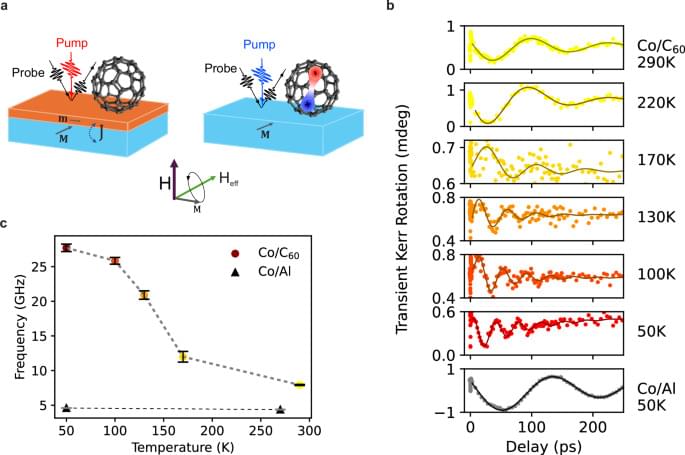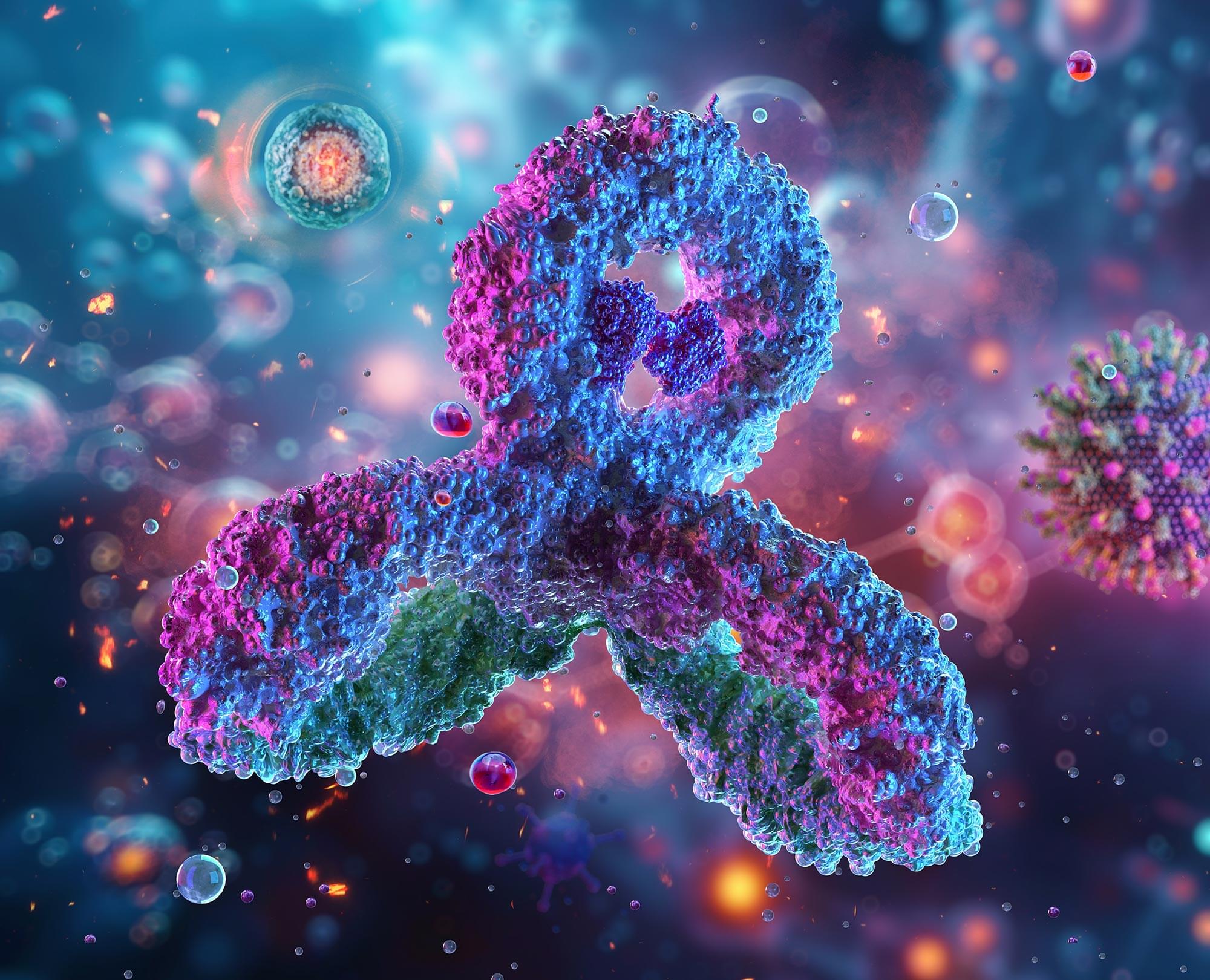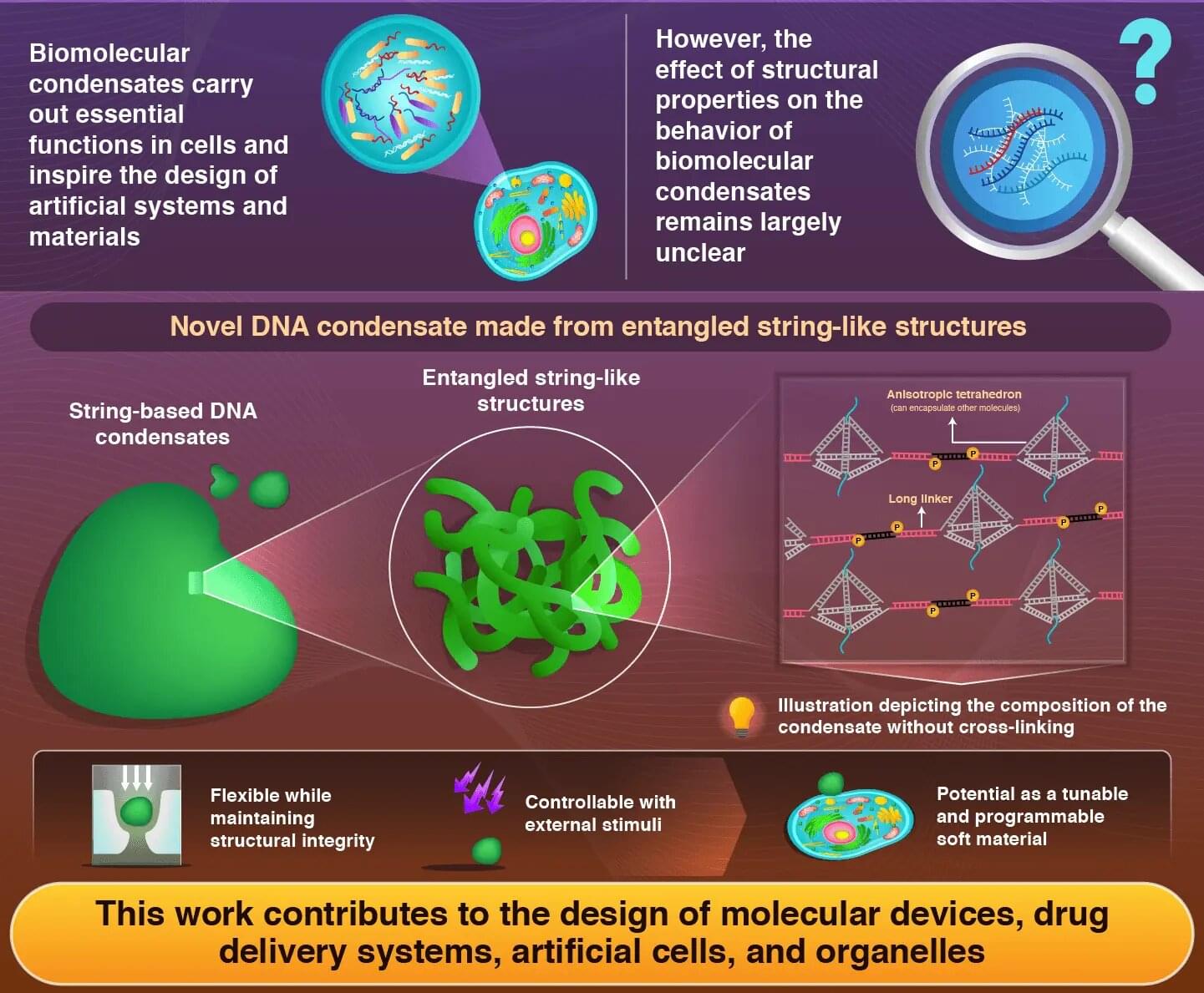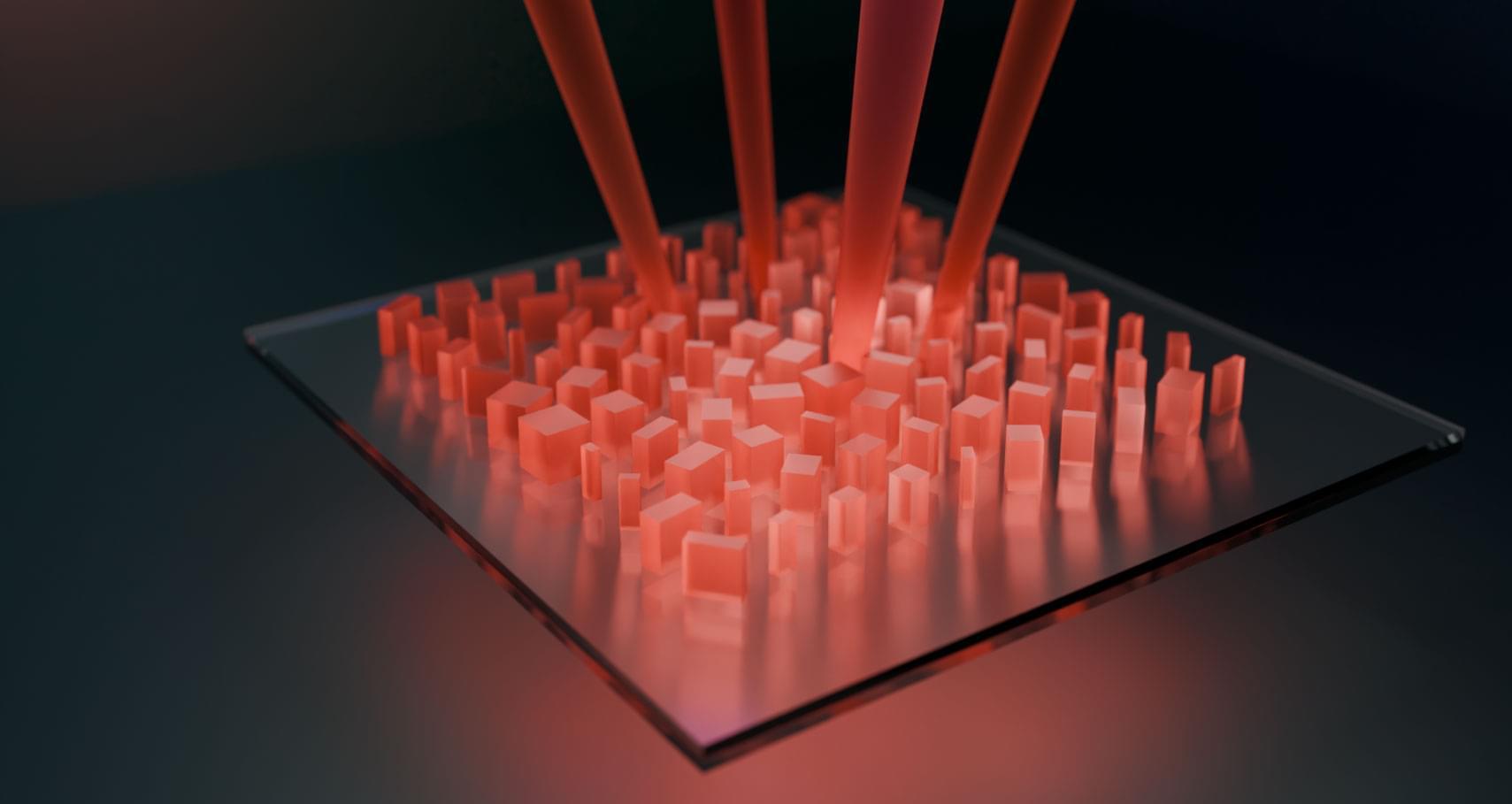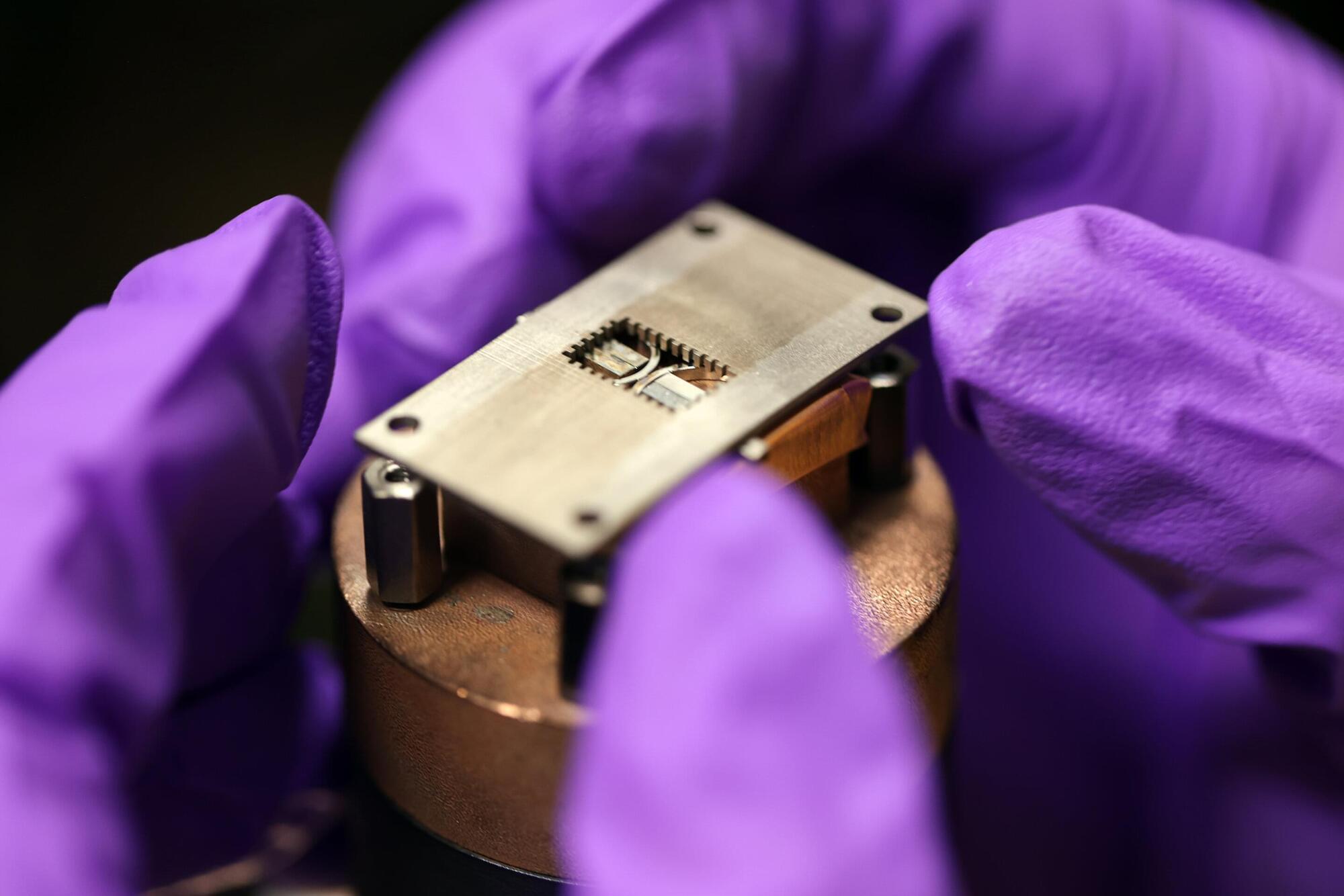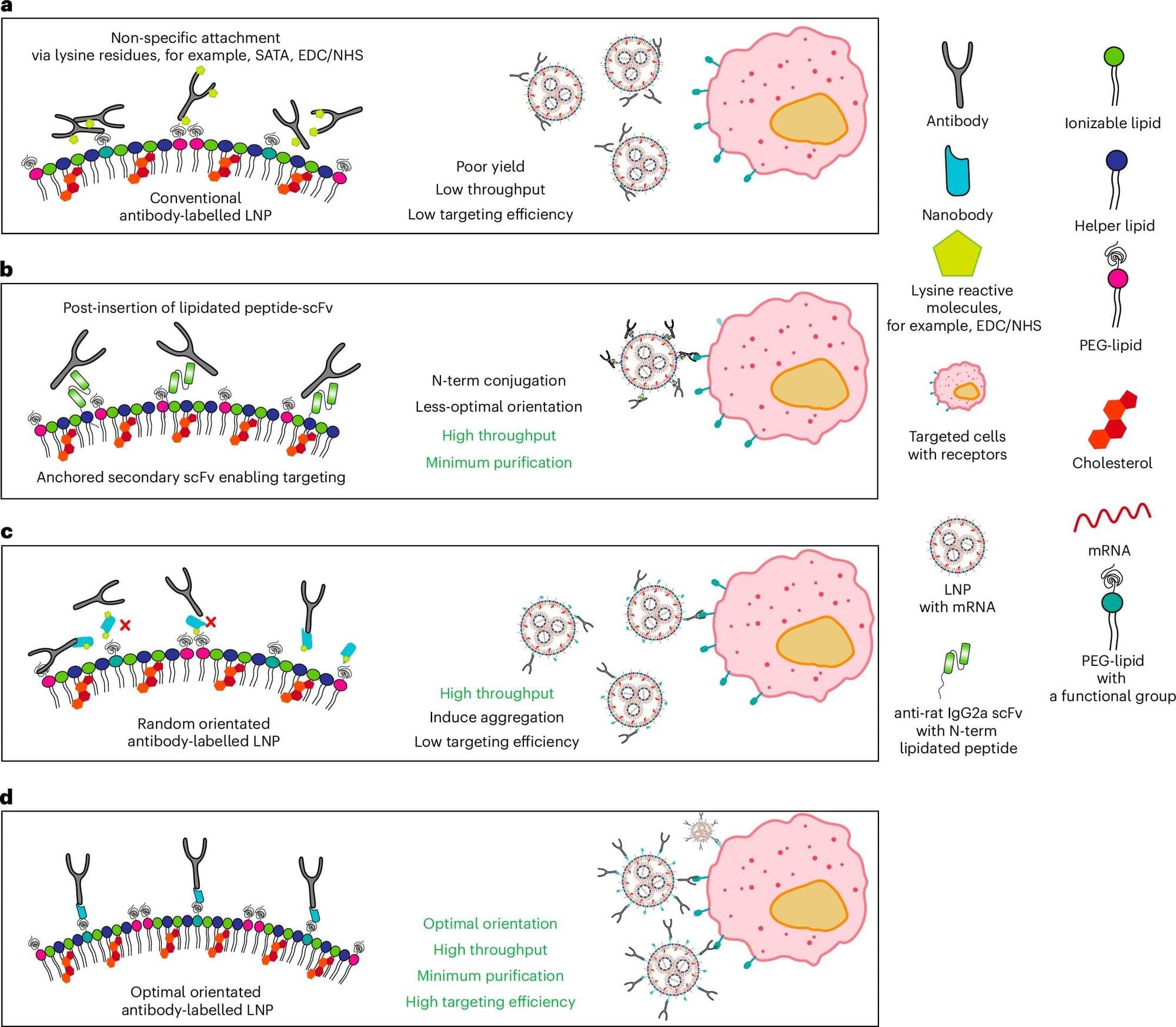Advancing quantum information and communication technology requires smaller and faster components with actively controllable functionalities. This work presents an all-optical strategy for dynamically modulating magnetic properties via proximity effects controlled by light. We demonstrate this concept using hybrid nanoscale systems composed of C₆₀ molecules proximitized to a cobalt metallic ferromagnetic surface, where proximity interactions are particularly strong. Our findings show that by inducing excitons in the C60 molecules with resonant ultrashort light pulses, we can significantly modify the interaction at the Cobalt/C60 interface, leading to a remarkable 60% transient shift in the frequency of the Co dipolar ferromagnetic resonance mode. This effect, detected via a specifically designed time-resolved Magneto-Optical Kerr Effect (tr-MOKE) experiment, persists on a timescale of hundreds of picoseconds. Since this frequency shift directly correlates with a transient change in the anisotropy field—an essential parameter for technological applications—our findings establish a new material platform for ultrafast optical control of magnetism at the nanoscale.
Proximity effects in molecule/metal heterostructures offer a promising route to control magnetic properties. Here, the authors report a light-controlled proximity effect at a Co/C₆₀ interface, where laser-induced excitons in C₆₀ alter interfacial interactions, leading to a 60% quenching of the ferromagnetic resonance frequency of Co.
